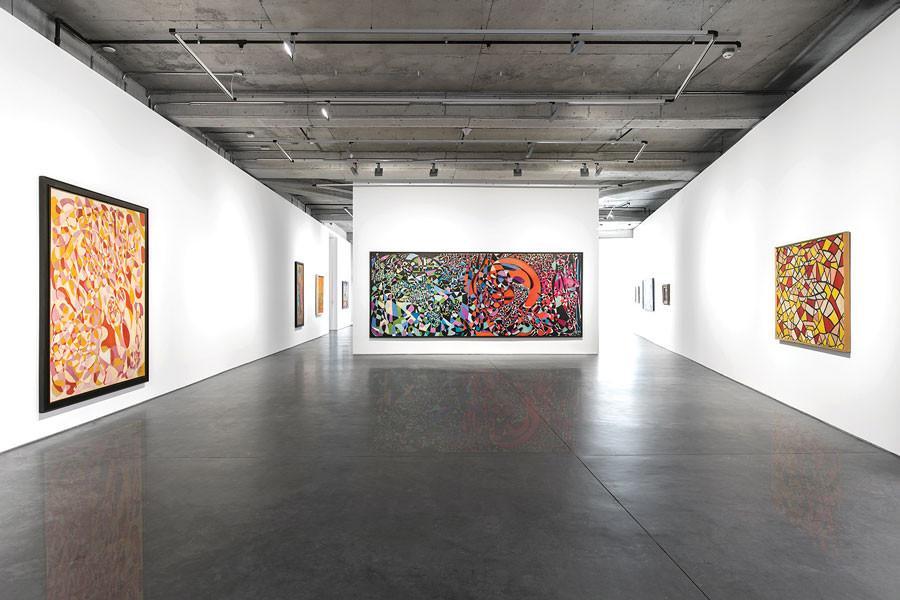Understanding Princess Fahrelnissa Zeid’s legacy
Hatice Utkan Özden

It is essential to know the importance of the legacy of Princess Fahrelnissa Zeid, who is a Turkish noblewoman, and pass it on to younger generations, according to her son Prince Ra’ad bin Zeid, the prince of Jordan. “We rely on younger generations to carry on the legacy,” he said during an interview with Hürriyet Daily News.
Thankfully, a new book titled “Fahrelnissa Zeid: Painter of Inner Worlds,” written by scholar Adila Laidi-Hanieh, pays tribute to her art. Meanwhile, Zeid’s solo exhibition in Istanbul’s Dirimart Gallery in Dolapdere is another contribution to art lovers who are looking forward to understanding Zeid’s footsteps in art.
The book by Laidi-Hanieh was also translated into Turkish with the efforts of Dirimart as the exhibition accompanied the launch of the book in Istanbul. All of these together stand as a reliable indicator of how Zeid’s works and life story are necessary for the Turkish audience.

If the essential thing is to understand Zeid’s legacy, it is first a must to know how she created her works and how these works are different from others produced in the same era. The reason might be Zeid’s unstoppable urge to create and deliver more art.
In Zeid’s life, something calls her into this creative urge and tells her there is only one truth and that is art. Zeid’s is a life full of love for creativity. Her only reality in life was always to create more art and live with her art. That is why her creations still make her unique in the art world.
Her son, His Royal Highness Prince Ra’ad bin Zeid knows this, and that is why according to him the most important thing is to continue her legacy. “She was a painter of the East and West. She was both of them at the same time,” he said.
According to the prince, each painting tells a different story, and each painting belongs to a different world. Zeid’s portraits also stand as a witness of her life.
“When she was creating something and when she was drawing, she would be in a complete trance. She did not communicate with anyone or the outer world. She worked on big canvases and small canvases and it was only a matter of the moment that she would start doing something new,” he said.
Zeid was always after a new thing. “In her art, each object would become an art piece. She wanted me to pick up stones, and she would turn them into art. In short, anything you can touch she could turn into art,” the prince said.
The last 25 years of her life were spent with her son in Jordan, who became a part of her works. While each work gives a story of her in a certain period, her son believes Fahrelnissa is a bridge between cultures and people. The exhibitions that have happened in the last few years are proof of Zeid’s legacy and her influence. The previous shows in London, Berlin and Istanbul are a valuable part of her heritage, according to the prince.
Ode to the passion of art
The exhibition gathers some of Zeid’s works between 1940-1980, which are figurative compositions from her early period, and are reminiscent of miniature paintings, geometrical and lyrical abstractionist works from her maturity period. Her portraits focus on psychological narration from her late period.
The exhibition opened simultaneously with the launch of the Turkish version of the book published and translated by RES Publications. The writer of the book tried to open a new path to understand Zeid’s art. According to Adila Laidi-Hanieh, Zeid was always a revolutionary person.
“Her works are revolutionary, and she was so creative, she even used bones and painted them and turned objects into art,” she said.
Laidi-Hanieh has known Zeid since she was a young child. Her mother was Zeid’s friend and student.
“My mother was a novelist and wanted to write about Zeid’s life. She told Zeid’s publisher, but her publisher was not interested in such a project,” she said.
Laidi-Hanieh is a scholar and writer who focuses on contemporary art, giving the reader a new way of understanding Zeid, not only through her family or personal life but through her art. Her research and writing have taken her nine months.
“She was an intellectually curious, cultivated and instinctive painter,” said Laidi-Hanieh, adding that her creative process was a layered one; in which she thinks, writes and draws to prepare for the process.
The idea of Zeid’s passion for creativity goes along with the name of the exhibition at Dirimart Dolapdere, Ode to Passion.
The exhibition will continue until Nov. 4. Dirimart Nişantaşı, on the other hand, hosts an exhibition by Zeid’s granddaughter, Princess Nissa Raad, who also adopts her late grandmother Zeid’s legacy.
















